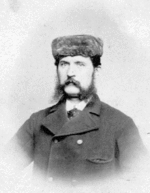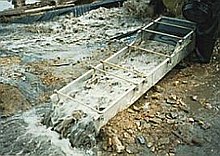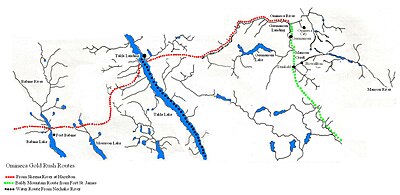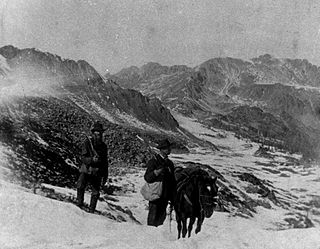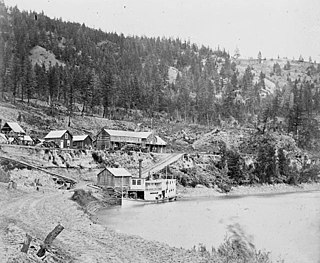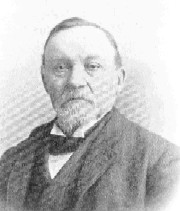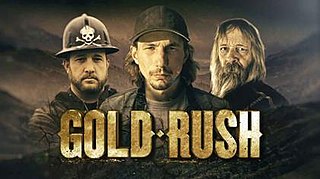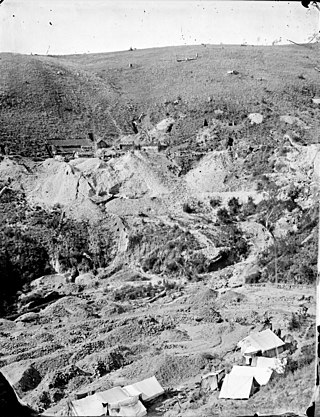1860s
Toy's Bar

The first recorded gold discovery in the Omineca district was made by William Cust and Edward Carey in the summer of 1861. The two men had traveled up from Alexandria that spring and returned in the fall with 60 ounces of gold between them. Despite such a small return for a summer filled with labor and hardship, they returned the following year with a group of more than twenty prospectors. In later years, some of these men would make major gold discoveries in the region, notably, Ezra Evans and Peter Toy. Along the Finlay River they discovered gold at a bar four miles from Finlay's Forks and named it Toy's Bar after Peter Toy. The bar would yield four ounces a day for each man. Another group of men on the Parsnip River, discovered 60 ounces of gold. [2] : 11, 12 Reports of these successes spread and in 1863, 150 men were in the area, among them, James May and the famous "Twelve-foot" Davis who had once made a small fortune by staking out a twelve-foot section of ground between two rich claims. However, most of these newcomers were unsuccessful and, to make matters worse, supplies were scarce. Many prospectors had to leave the diggings and return to their homes in defeat. Two that stayed on and prospected at Toy's Bar were John Giscome and Henry McDame, both of whom had worked on the Peace, Smoky and Nation Rivers. McDame had made a discovery in the Cassiar district and McDame's Creek was named in his honor. [3]
Silver Creek
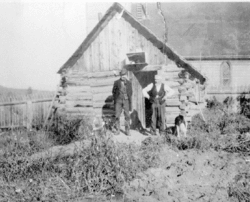
Throughout 1864–1868, very little activity is recorded in the Omineca district, although many of these prospectors returned regularly and worked at Toy's Bar and other known areas where they knew they would find enough gold to be able to fund their other prospecting ventures. In 1868, four of the miners, Ezra Evans "Twelve-foot" Davis, William Humphrey and Gaylord went from Fort St. James up to Takla Landing via the Stuart, Trembleur and Takla Lakes. Along the way they discovered what they initially believed was silver but was actually arquerite, an amalgam of native silver and mercury. They named the creek where they made this discovery Silver Creek. The four miners went back to Quesnel that fall and appealed for funds to explore the Omineca area the following year. A group of miners was organized and after a concerted effort they raised more than $1000 from Quesnel farmers and businessmen and then the Colonial government gave the miners another $1000. The group of prospectors would be called the Peace River Prospecting Party. Strangely, the party was made up of only one of the original discoverers of Silver Creek, William Humphrey. The omission of Evans, Davis and Gaylord would be an error that the group's organizers would regret. [2] : 14, 15
The rest of the group was Vital Laforce and Mike Byrnes, both of whom had been scouts for the Overland Telegraph Company, along with Patrick Kelly, James Hawkins and Allen Hawkins. The arrangements for the trip were made by a committee of three well-known men, storekeeper Peter Dunlevy who owned stores at Soda Creek and Fort George, Edgar Dewdney and pioneer road builder Gustavus Blin-Wright who also owned the local paddle steamers, Enterprise and Victoria. [2] : 14
Vital Creek
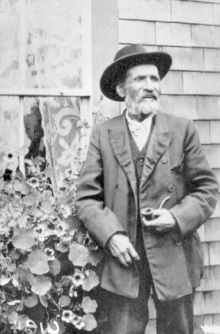
The Peace River Prospecting Party set out from Quesnel on May 3, 1869, having been supplied with a large boat, the necessary tools and a year's supply of food. The party followed the water route via the Fraser, Nechako and Stuart Rivers and up through Stuart, Trembleur and Takla Lake. When they arrived at Silver Creek, Vital Laforce discovered gold on one of its tributaries on June 21. In honor of this discovery the creek was named Vital Creek and the nearby mountains were named Vital Mountains. The party received unexpected company near the end of June with the arrival of two of Silver Creek's original discoverers, Ezra Evans and Gaylord. Now the party had a problem, they had promised that they would simply explore and prospect, not actually work claims. Evans and Gaylord were not bound by any such commitment and they moved upriver from the party and commenced mining. In retaliation the party stayed at Vital Creek and mined until freeze up. One thing the two groups did agree on was that they wanted to discourage any more miners from coming up the following year. Though obliged to report their earnings, they all intended to report that the diggings were not very good and that more should be known of the country before any discoveries were reported. With the exception of Patrick Kelly and Vital LaForce, who stayed at Fort St. James, the other miners all returned to Quesnel with the news that the venture had only been marginally successful. However, suspicions were raised when the men announced they were returning to Vital Creek for the winter and even more eyebrows were raised when it was discovered that LaForce and Kelly had spent an astounding $2500 at the Fort St. James trading post.
On October 29 the Peace River Prospecting Party and Ezra Evans' group left to return to Vital Creek, but they would not be alone for long. Gold rush fever had swept Quesnel and letters had been sent to nearby Barkerville urging friends and family to drop everything and head for Omineca. Among these newcomers was Rufus Sylvester, who would not only mine in the Omineca district but would also run a letter and parcel express service between the Omineca diggings and Quesnel. Two other mining parties were organized, one under "Twelve-foot" Davis and another led by Duncan McMartin. Sylvester's party returned in December to record that they had staked 56 claims and they reported that the original miners at Vital Creek had been incorrect and the discovery was richer than everyone had been led to believe. Upon hearing this news, many more miners decided to go north to the Omineca diggings and the rush was officially on. [2] : 17–19

